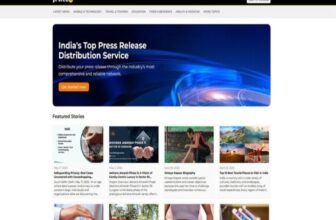
The WhatsApp Business API has become an essential tool for businesses looking to connect with their audience in a more personalized and engaging manner. However, to maximize its potential, it’s crucial to follow best practices and avoid common pitfalls.

Here are the do’s and don’ts of using the WhatsApp Business API for marketing. With a bit of research and consulting professionals you can find quality and efficient business WhatsApp at low price that delivers high ROI.
Do’s
-
Build a Targeted Audience
- Grow Organically: Encourage website visitors, social media followers, and existing customers to opt-in through clear calls-to-action (CTAs), QR codes, and in-app prompts. Make sure to respect personal data preferences and clearly communicate the value proposition of receiving updates.
- Segment Your Audience: Categorize subscribers based on demographics, interests, purchase history, and engagement levels. This allows for personalized messaging and targeted campaigns, maximizing relevance and engagement.
-
Craft Compelling Content
- Informative and Educational: Share valuable content like industry insights, product tutorials, exclusive behind-the-scenes glimpses, and early access to news. This establishes expertise, builds trust, and positions your brand as a thought leader.
- Interactive and Engaging: Utilize polls, quizzes, contests, and interactive product demonstrations to spark conversations, gather valuable feedback, and boost audience participation.
- Promotional Offers with Value: Offer exclusive deals, early access to sales, personalized recommendations, and loyalty programs to incentivize engagement and drive conversions. Focus on providing value beyond just discounts.
-
Prioritize Engagement
- Personalize Your Messages: Address subscribers by name, reference past interactions, and tailor content to their specific needs and interests. This fosters a sense of connection and demonstrates genuine care.
- Respond Promptly: Aim for quick response times, ideally within 24 hours. Utilize automated tools for FAQs and basic inquiries to ensure promptness and maintain responsiveness even during peak periods.
- Offer Value at Every Touchpoint: Every interaction should provide value, whether it’s informative content, exclusive offers, helpful customer support, or simply acknowledging their message. Make them feel heard and appreciated.
-
Measure and Refine
- Track Essential Metrics: Keep an eye on critical metrics such as open rates, click-through rates, engagement levels, conversion rates, and customer satisfaction scores. By analyzing these metrics, you gain insights into audience preferences and pinpoint areas for enhancing performance.
- Utilize Business Insights: Analyze user behavior, popular content, and engagement patterns to tailor your approach and personalize messages further.
- Continuously Adapt: Don’t be afraid to experiment, test different strategies, and refine your approach based on data insights.
Don’ts
-
Avoid Sending Unsolicited Messages
- Respect Privacy: Always obtain explicit consent from users before sending them messages. Unsolicited messages can lead to complaints, blocking, and potential penalties.
- Follow Legal Compliance: Adhere to regulations such as the General Data Protection Regulation (GDPR) and other local privacy laws to avoid legal issues.
-
Don’t Overwhelm Customers with Frequent Messages
- Maintain a Balanced Frequency: Sending too many messages can annoy customers and lead to high unsubscribe rates. Find a balance that keeps your audience engaged without overwhelming them.
- Quality Over Quantity: Focus on the quality of your messages rather than the quantity. Ensure each message provides value and is relevant to the recipient.
-
Steer Clear of Generic, Impersonal Templates
- Personalize Your Communication: Avoid using generic templates that lack personalization. Tailor your messages to the individual recipient to make them feel valued and understood.
- Use Dynamic Content: Incorporate dynamic content that changes based on the recipient’s preferences and behavior to enhance personalization.
-
Don’t Neglect Customer Feedback
- Actively Seek Feedback: Encourage customers to provide feedback on their experience with your messages and services. Use this feedback to improve your communication strategy.
- Respond to Feedback: Show customers that their feedback is valued by responding promptly and making necessary adjustments based on their suggestions.
-
Avoid Ignoring Negative Responses
- Address Complaints: If a customer expresses dissatisfaction, address their concerns promptly and professionally. Ignoring negative responses can damage your brand’s reputation.
- Learn from Criticism: Use negative feedback as an opportunity to learn and improve. Understanding the reasons behind customer dissatisfaction can help you refine your approach and prevent similar issues in the future.
Conclusion:
Using the business WhatsApp at low price for marketing can be highly effective when done correctly. By following these do’s and don’ts, you can create a more engaging, personalized, and compliant marketing strategy that maximizes the potential of this powerful tool. Remember, the key to success lies in building meaningful relationships with your audience, delivering exceptional customer experiences, and continuously learning from data and feedback. Embrace these best practices to enhance your marketing efforts and achieve better results with the WhatsApp Business API.







